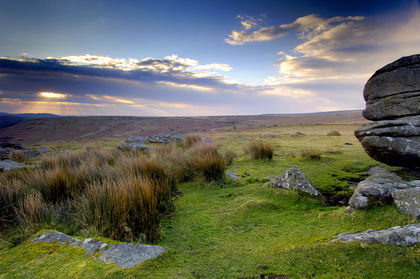United Kingdom - Flora and fauna

With its mild climate and varied soils, the United Kingdom has a diverse pattern of natural vegetation. Originally, oak forests probably covered the lowland, except for the fens and marsh areas, while pine forests and patches of moorland covered the higher or sandy ground. Over the centuries, much of the forest area, especially on the lowlands, was cleared for cultivation. Today only about 9% of the total surface is wooded. Fairly extensive forests remain in east and north Scotland and in southeast England. Oak, elm, ash, and beech are the most common trees in England. Pine and birch are most common in Scotland. Almost all the lowland outside the industrial centers is farmland, with a varied seminatural vegetation of grasses and flowering plants. Wild vegetation consists of the natural flora of woods, fens and marshes, cliffs, chalk downs, and mountain slopes, the most widespread being the heather, grasses, gorse, and bracken of the moorlands.
The fauna is similar to that of northwestern continental Europe, although there are fewer species. Some of the larger mammals—wolf, bear, boar, and reindeer—are extinct, but red and roe deer are protected for sport. Common smaller mammals are foxes, hares, hedgehogs, rabbits, weasels, stoats, shrews, rats, and mice; otters are found in many rivers, and seals frequently appear along the coast. There are few reptiles and amphibians. Roughly 230 species of birds reside in the United Kingdom, and another 200 are migratory. Most numerous are the chaffinch, blackbird, sparrow, and starling. The number of large birds is declining, however, except for game birds—pheasant, partridge, and red grouse—which are protected. With the reclamation of the marshlands, waterfowl are moving to the many bird sanctuaries. The rivers and lakes abound in salmon, trout, perch, pike, roach, dace, and grayling. There are more than 21,000 species of insects.